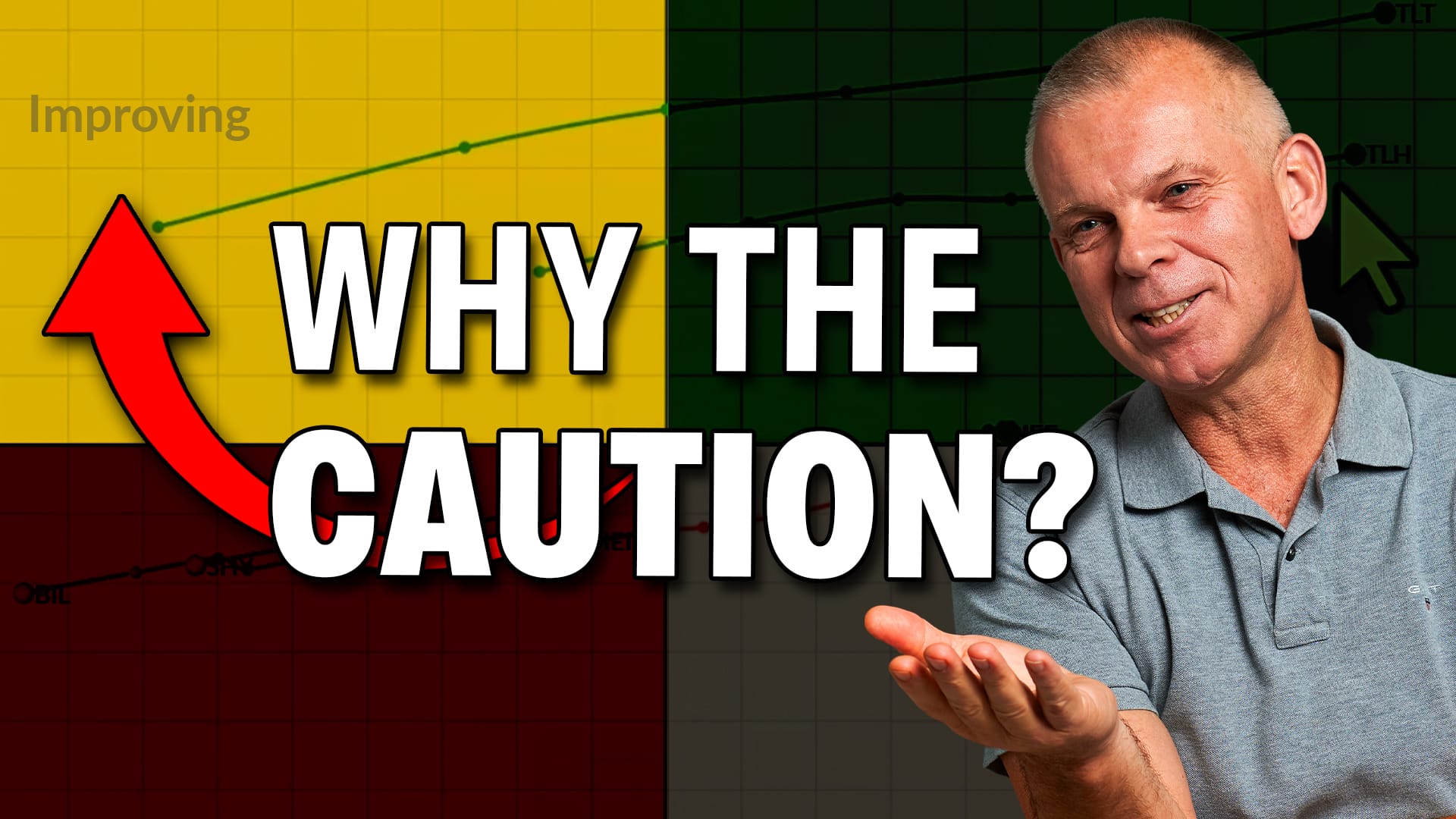LONG-TERM BREADTH AND MOMENTUM INDICATORS AREN'T ENCOURAGING -- COMMODITY INDEXES PULL BACK FROM RESISTANCE AT OLD HIGHS -- GOLD AND OIL IN CORRECTIVE MODE -- SELL INTO ANY YEAREND RALLY
S&P 500 NEEDS TO CLEAR 100-DAY LINE ... On Monday I wrote about the S&P 500 testing long-term support at its 400-day (80-week) moving average line. The S&P has bounced off that support line to improve its short-term trend. I explained that the 80-"week" line was based on the 20-"month" moving average derived from monthly Bollinger bands. By converting the 20-"week" Bollinger band to days, we get the 100-day moving average (blue) line in Chart 1. The market needs to clear that resistance line to improve the short-term trend even further. That would coincide with the S&P closing above its mid-November peak at 1492. The ability of the market to bounce off moving average support lines, and the August lows, is certainly encouraging. Failure to do so would have flashed a major bear signal. The big question now is whether this is the start of a new upleg or just a bounce in a topping pattern. Unfortunately, longer-range indicators favor the latter scenario.

Chart 1
NYSE ADVANCE-DECLINE LINE BOUNCES OFF SUPPORT... There's good and bad news in Chart 2. The good news is that the NYSE Advance-Decline line has also bounced off chart support at its mid-August low. That bounced prevented the NYAD from initiating a negative pattern of "lower lows and lower highs" and the possible start of a bear market. The bad news is that the NYAD has fallen far below its 200-day moving average. Chart 3 shows that this is the first downside violation of the 40-week (200-day) average since the bull market started in the spring of 2003. That tilts the odds toward a topping pattern.

Chart 2
NYSE SUMMATION INDEX IS STILL NEGATIVE ... I recently wrote an article explaining the relationship between the McClellan Oscillator (a short-term mesure of market breadth) and the Summation Index (a longer-range version of the oscillator). Over the last week, the oscillator turned positive which is a good sign. That turned the NYSE Summation Index up for the first time in a month. Chart 3 shows, however, that the Summation Index is still deep in negative territory. I've suggested before that a positive reading (above the zero line) is a minimum requirement for a bull market to continue. The green arrows in Chart 3 show positive crossings back over the zero line coinciding with the start of new uplegs in 2005 and 2006. The fact that the NYSI is near the lowest level in five years should make a similar upturn more difficult and less likely this time.

Chart 3
BULL MARKET LOSING MOMENUM... The most important trend signals are given on monthly charts. Ultimately, the trend of the monthly chart overrides daily and weekly trends. There are two important pieces of information on Chart 4 which is a monthly S&P 500 chart. The first is simply the fact that the S&P is up against major resistance at its 2000 peak. That's a logical chart spot for the major uptrend to run into serious selling. The second piece of information is the 14-month RSI line plotted over the price bars. The RSI is a momentum indicator and usually turns before the market does. The last time the RSI fell below 30 (major oversold) was in the middle of 2002 as the market was bottoming. The S&P moved over 70 in the middle of 2006. That's a sign the market had reached major overbought territory. What has me more concerned is the fact that the RSI has now started to fall for the first time in five years. The last move by the S&P into new highs also went "unconfirmed" by the monthly RSI (falling red line). Chart 6 demonstrates the concept of "divergence" more clearly. In the spring of 2003, the RSI formed a pattern of "higher lows" (up arrow) as the market was retesting its 2002 low. That was the real buy signal. At present, the RSI has formed a pattern of "lower highs" as the market briefly touched a new high (down arrow). That, and the fact that this is the most serious downturn in the RSI in five years, is another warning that the staying power of any yearend rally is in doubt.

Chart 4

Chart 5
OVERBOUGHT COMMODITIES STALL AT OLD HIGHS... On Tuesday, I suggested that weakness in energy shares was signalling a peak in the commodity. I could have said the same about gold. Both commodities have sold off this week (as an oversold dollar has bounced). There are a couple of other technical reasons why commodities are being sold this week. The next two charts show the Reuters/Jefferies CRB Index (Chart 6) and the Goldman Sachs Total Return Index (Chart 7) up against major resistance at their old highs formed between 2005 and 2006. What's more, their 14-week RSI lines had moved into overbought terrritory over 70 before turning down this week. Friday's action saw more weakness in gold, oil, and agricultural markets. Increased signs of economic slowing may also explain new commodity weakness.

Chart 6

Chart 7
GOLD AND OIL IN CORRECTIVE MODE... The next two charts are point & figure versions of gold and oil ETFS. Both are now in corrective mode. Chart 8 shows the streetTracks Gold Shares (GLD) needing a close at 76 or lower to trigger a short-term sell signal. Chart 9 shows the United States Oil Fund (USO) already on a short-term sell. These are not signals of major trend changes. They are enough, however, to warrant some profit-taking in commodity markets.

Chart 8

Chart 9
SELL YEAREND RALLY... The three horizontal lines in the middle of Chart 12 represent Fibonacci retracements of the October/November decline of 38%, 50%, and 62%. The two most important resistance lines are at 1492 (50%) and 1512 (62%). The S&P has already recovered half of its recent losses and is testing its mid-November peak at 1492. There's also potential resistance at the mid-October low at 1489. That puts the market right up against its first significant barrier. A decisive close over 1492 is needed to keep the rally going. Seasonal factors may also support a yearend rally. The problem is that longer-term indicators suggest that any yearend rally would probably be part of a major topping pattern. That suggests a strategy of selling into any Santa Claus rally.

Chart 10








